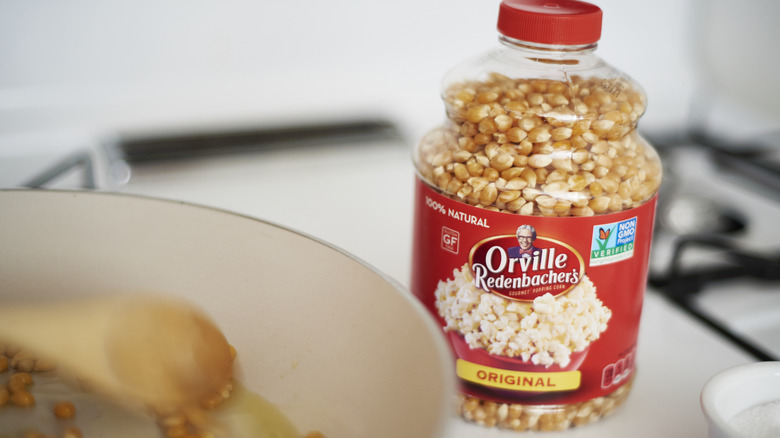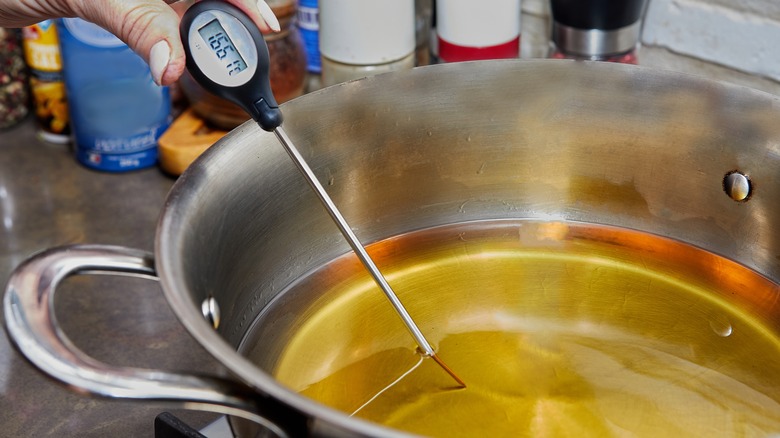Use A Popcorn Kernel To Check If Your Frying Oil Is Ready
Frying is one of the simplest cooking techniques you can do in a kitchen but it has its own challenges. The foremost is figuring out when the oil is hot enough. If you have a thermometer at hand, it's as simple as sticking the probe into the oil and reading the number that pops up on screen. But, if you don't have a thermometer — or if you do, but it's out of commission — what then? Well, if you have a jar of popcorn kernels at home for the occasional movie night, there's good news: The kernels can work as an ad-hoc oil thermometer in a pinch!
Kernels bloom into popcorn at around 355 F (180 C). According to the USDA, the ideal oil temperature range for deep frying safely is between roughly 350 F (176.6 C) and 375 F (190.5 C). Conveniently, the popcorn popping temperature lands right in that range, making a single kernel an accurate way to estimate how hot your oil is.
In practice, here's all you need to do: Begin heating up your cooking oil in a pan and toss in a single popcorn kernel (or a few more if you want to be extra cautious) early on in the process. Keep a close eye on it. When that kernel pops, that's your cue that the oil is hot enough for frying. Simply pluck out the popcorn and add whatever food you intend to fry.
Other methods to check the temperature of hot oil
If you don't have popcorn kernels on hand, there are a couple of other simple methods you can use to gauge the temperature of your oil. One involves a wooden spoon or a wooden chopstick. Gently dip the tip of the spoon into the oil. If you see the oil start to bubble moderately around the spoon, that's your sign that it's at the right temperature for frying. If there are no bubbles, or if the bubbles are overwhelming, then adjust your temperature accordingly.
Another method is to use a small square of bread. Drop it into the hot oil and start your kitchen timer the moment the bread touches the oil. If it takes around 60 seconds for the bread to begin browning, then the oil is likely at the right temperature, around 350 F to 360 F.
It's important to note that while these tricks can be useful in a pinch, they are not the most reliable or safest methods. For instance, the popcorn and spoon tricks can cause splattering. The easiest, most accurate, and safest technique is still to use a digital thermometer, which are quite affordable these days with some models costing less than $20. If you frequently fry food, having a backup thermometer at home can really save you a lot of trouble!

